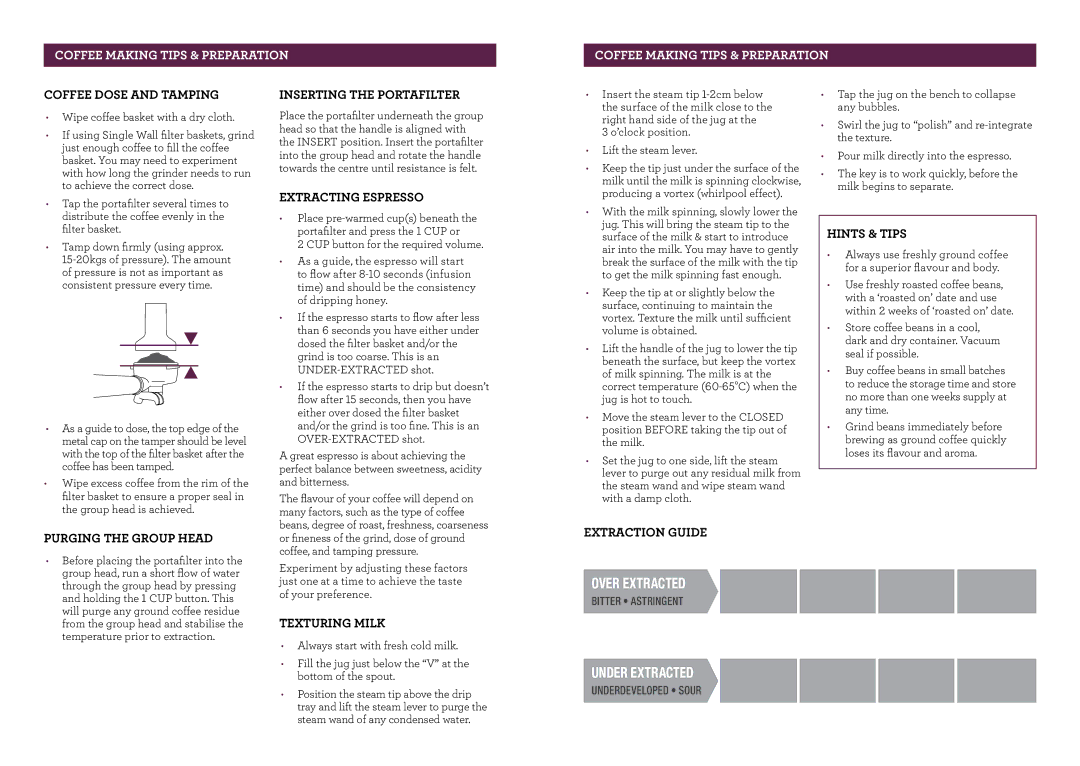BES900 specifications
The Breville BES900, popularly known as the Dual Boiler Espresso Machine, is a marvel of engineering designed for both serious home baristas and coffee enthusiasts. With its dual boiler system, the BES900 allows users to brew espresso and steam milk simultaneously, ensuring that each cup is crafted to perfection without compromising on timing or temperature.One of the standout features of the Breville BES900 is its precise temperature control. It employs advanced PID (Proportional Integral Derivative) technology, which maintains the ideal brewing temperature, enhancing flavor extraction and ensuring consistent results. This temperature stability is crucial for achieving the perfect shot of espresso, as the flavor can be drastically altered by minute changes in temperature.
The BES900 also boasts a powerful steam wand that delivers professional-quality microfoam for lattes and cappuccinos. This steam wand offers both manual and automatic controls, allowing users to craft textured milk to their desired consistency. The ability to froth milk effectively is essential for creating café-quality beverages at home, and Breville has made this process intuitive and accessible.
Another notable characteristic of the BES900 is its intuitive interface, which includes a backlit LCD screen that provides valuable feedback on brew temperature and shot duration. This user-friendly display simplifies the coffee-making process and helps users fine-tune their brewing techniques over time.
Durability is another key feature of the Breville BES900. Constructed with high-quality materials, including stainless steel, this machine is built to withstand the daily demands of home use. Its sleek and modern design not only looks stunning on any kitchen countertop but also ensures ease of cleaning and maintenance.
Additionally, the BES900 comes equipped with an integrated coffee grinder option, providing the convenience of freshly ground coffee before each brew. This integration allows for maximum freshness and the best possible flavor extraction from the coffee beans.
In summary, the Breville BES900 Dual Boiler Espresso Machine combines advanced technology with user-friendly features to deliver an exceptional coffee experience. Its dual boiler system, precise temperature control, powerful steam wand, and durable construction make it a standout choice for coffee lovers seeking to elevate their home brewing experience. Whether you are a novice or an experienced barista, the BES900 is designed to help you unlock the full potential of your coffee beans and craft barista-quality espresso drinks at home.

